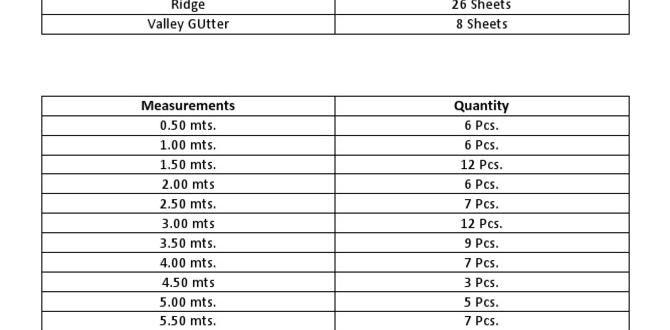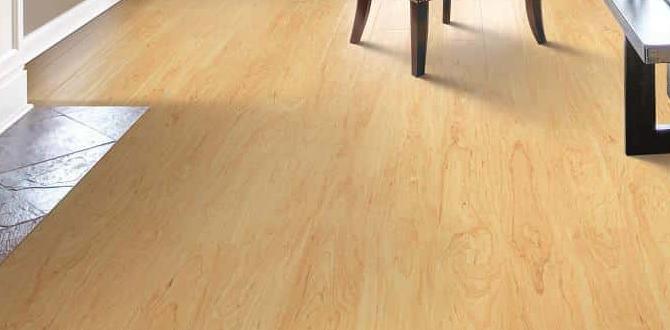Bolded Quick Summary:
Generally, a cordless nailer can drive between 500 to over 2000 nails on a single full battery charge, depending heavily on the nailer type, battery size, nail gauge, wood density, and depth setting. For most DIYers, a single charge is more than enough for typical home projects.
Hey there, fellow DIYers and woodworking enthusiasts! Jack Shaffer, your Nailerguy, here. Ever find yourself mid-project, ready to put the finishing touches on something you’ve poured your heart into, only to have your cordless nailer sputter and die? It’s a common frustration, right? You wonder, “How many nails can I actually get out of this thing on one charge?” It’s a super practical question that can save you time, money, and a whole lot of guesswork.
Don’t worry, we’re going to demystify this! We’ll break down exactly what affects your nailer’s battery life and give you the confidence to tackle any project. Stick with me, and by the end of this guide, you’ll be a cordless nailer battery pro. We’ll cover everything from the nailer itself to the nitty-gritty details that make a difference.
Table of Contents
Understanding Cordless Nailer Battery Life: More Than Just a Number
So, you’ve got a shiny new cordless nailer, and you’re excited to get to work. One of the biggest questions on your mind is likely about its power source: the battery. “How many nails per charge can I expect?” It’s a valid question, and the answer isn’t a simple, one-size-fits-all number. Think of it like asking how far a car can go on a tank of gas – it depends on the car, how you drive it, and the road conditions!
Several factors play a crucial role in determining how many nails your cordless nailer can drive before needing a recharge. Understanding these will help you plan your projects and avoid unexpected battery downtime. Let’s dive into what makes the difference.
The Nailer Itself: Type and Technology
Not all cordless nailers are created equal. Their design and internal workings significantly impact battery consumption. There are typically three main types of cordless nailers you’ll encounter, each with its own power mechanism that affects nail count:
- 18V/20V Max Li-ion Cordless Nailers: These are the most common for DIYers. They use a lithium-ion battery to power a motor, which then drives a piston to sink the nail. This is a direct electrical-to-mechanical system.
- Fuel Cell (Gas) Cordless Nailers: While these still use a battery (usually 7.2V or 14.4V) to ignite a fuel cell (like propane or a proprietary mix), the primary driving force comes from the explosion of the fuel. The battery’s role is more about ignition and fan operation. They can often drive more nails per battery charge because the battery isn’t doing all the heavy lifting, but you have the ongoing cost and refueling of the gas canisters.
- Hybrid Cordless Nailers: Some newer models combine battery power with a small gas cartridge. The battery provides the initial punch, and the gas helps finish the job. These aim to balance power and efficiency.
The efficiency of the motor, the sophistication of the electronics, and the overall design of the tool all contribute to how much energy it draws from the battery with each shot. Newer, more advanced models often have better energy management systems, leading to more nails per charge.
Battery Capacity: The Heart of the Matter
This is arguably the most significant factor. Batteries are rated in Amp-hours (Ah). A higher Ah rating means the battery can deliver more current for a longer period, translating directly to more power and more nails. You’ll commonly see batteries rated as 1.5Ah, 2.0Ah, 4.0Ah, or even 5.0Ah and higher.
- Lower Ah Battery (e.g., 1.5Ah – 2.0Ah): Great for lighter-duty tasks or for keeping the tool’s weight down. You’ll likely get fewer nails per charge.
- Higher Ah Battery (e.g., 4.0Ah – 5.0Ah+): Ideal for more demanding projects or if you plan to use the nailer for extended periods. These will give you significantly more shots per charge.
Think of it like this: a 4.0Ah battery has roughly twice the “juice” as a 2.0Ah battery. So, if a nailer gets 1000 nails with a 2.0Ah battery, you might expect around 2000 nails with a 4.0Ah battery under similar conditions and on the same nailer model.
Nail Gauge and Length: The Resistance Factor
The type of nail you’re driving has a direct impact on the effort your nailer needs to exert. This is measured by the nail’s gauge and length.
- Nail Gauge: This refers to the diameter of the nail. Thinner nails (higher gauge numbers, like 18-gauge or 23-gauge) require less force to drive than thicker nails (lower gauge numbers, like 15-gauge or 10-gauge).
- Nail Length: Driving a longer nail requires more power than driving a shorter one, as the piston needs to travel further and exert more force against the material.
Example: Driving a 2-inch 15-gauge finish nail into hardwood will consume more battery power than driving a 1-inch 23-gauge brad into softwood.
This is why framing nailers (which drive larger, longer nails) tend to have a lower nail count per charge compared to brad nailers or finish nailers, even if they use the same battery pack.
Wood Species and Density: The Material Matters
The material you’re fastening into is a big player. Driving nails into softwoods like pine or fir requires much less energy than driving them into hardwoods like oak, maple, or even pressure-treated lumber. Harder woods offer more resistance, making the nailer work harder and drain the battery faster.
If you’re working on a project that involves a lot of hardwood, expect fewer nails per charge than if you were doing the same job in pine. Sometimes, you might even need to adjust your nailer’s depth setting to compensate for denser materials.
Depth Setting: How Deep Do You Go?
Most cordless nailers allow you to adjust the depth at which the nail is driven. Setting the nailer to drive nails deeper requires more power. If you’re setting your nail depth very high, especially into denser materials, you’ll use more battery power per nail.
Conversely, if you only need to set the nail slightly below the surface for trim work, you’ll conserve battery. It’s good practice to set the depth accurately for your specific needs rather than always going for the maximum depth, which saves battery and prevents over-driving.
Environmental Factors: Temperature and Humidity
While often overlooked, environmental conditions can influence battery performance. Extremely cold temperatures can reduce battery capacity and power output. Extreme heat can also affect battery life, though lithium-ion batteries generally handle heat better than older battery technologies.
High humidity can sometimes make wood swell or become slightly more resistant, subtly increasing the effort required by the nailer, though this is usually a minor factor compared to wood species.
Estimating Nail Count: Typical Performance
Given all these variables, providing an exact number for “how many nails per charge” is tricky. However, we can provide some general ranges based on common nailer types and battery sizes. These are estimates, and your actual results may vary.
General Nailer Performance Estimates (Per Full Charge)
Here’s a table to give you a ballpark idea of what you might expect from typical 18V/20V Max cordless nailers with a standard 2.0Ah to 4.0Ah battery:
| Nailer Type | Typical Nail Gauge | Battery Size (Estimate) | Estimated Nails per Charge |
|---|---|---|---|
| Framing Nailer | 8-12 Gauge | 2.0Ah – 4.0Ah | 400 – 1000+ |
| Finish Nailer (15-16 Gauge) | 15-16 Gauge | 2.0Ah – 4.0Ah | 800 – 2000+ |
| Brad Nailer (18 Gauge) | 18 Gauge | 2.0Ah – 4.0Ah | 1000 – 3000+ |
| Pin Nailer / Micro-Pinner (23 Gauge) | 23 Gauge | 1.5Ah – 2.0Ah | 1500 – 5000+ |
Important Considerations for the Table:
- These numbers assume driving nails into medium-density wood (like pine or fir) at typical depth settings.
- They assume the use of a 2.0Ah to 4.0Ah battery for 18V/20V Max systems. Larger batteries will yield more nails.
- Fuel cell nailers (like certain Paslode models) can often achieve 1000-1500+ nails per battery charge and thousands per fuel cell.
When looking at manufacturer specifications, they often quote a “maximum” number of nails per charge. This is usually achieved under ideal conditions (e.g., driving into softwood, minimal depth). Your real-world results will likely be lower but should still be substantial for most tasks.
Maximizing Your Nailer’s Battery Life: Practical Tips
Want to get the most bangs for your buck – or rather, the most nails per charge? Here are some tried-and-true tips to help you extend your battery life:
- Use the Right Nailer for the Job: Don’t use a framing nailer to hang a small picture frame. Use the smallest gauge nailer suitable for your task. This reduces strain and power consumption.
- Choose Appropriate Nails: Ensure your nails are the correct size and gauge for the material and the nailer. Using nails that are too long or too wide for the application will drain your battery unnecessarily.
- Set Depth Accurately: Don’t drive nails deeper than you need to. Dial in your depth setting for the specific application. This conserves power and often results in a cleaner finish.
- Maintain Your Nailer: Keep your nailer clean. A well-maintained tool runs more efficiently. Check the manual for recommended cleaning and lubrication procedures. For pneumatic nailers (even those powered by batteries), ensure the air filter and regulator are clean if applicable.
- Use the Right Battery: Whenever possible, use the higher capacity (Ah) batteries your tool manufacturer recommends. While they might be heavier, they’ll offer significantly more runtime.
- Store Batteries Properly: Keep your batteries stored in a cool, dry place. Avoid leaving them in extreme temperatures. For long-term storage, many manufacturers recommend storing them at a partial charge (around 70-80%).
- Allow Batteries to Cool: If you’re using up a battery on a demanding job, let it cool down for a bit before recharging. Similarly, let a freshly charged battery rest for a few minutes before its first use, especially on a cold day.
- Work Smart: Try to group similar tasks together. For instance, if you’re building a large frame, try to do all the nailing for that frame in one session. This minimizes the charge/discharge cycles a battery goes through.
- Consider a Multi-Tool Battery System: Many brands offer a range of tools that use the same battery platform. If you own multiple tools from the same brand, you can easily swap batteries, ensuring you always have a charged one available. Learn more about battery compatibility by checking out resources from organizations like The U.S. Department of Energy on battery technology.
Troubleshooting Common Battery Life Issues
Sometimes, despite your best efforts, you might notice your nailer isn’t performing as expected on a charge. Here are a few common issues and how to address them:
Issue 1: Significantly Fewer Nails Than Expected
- Possible Cause: Battery age/wear, driving into very hard material, depth set too deep, or incorrect battery.
- Solution: Check battery health (some tools have indicators). Ensure you’re using the correct, recommended battery for the tool. Re-evaluate your depth setting and the wood you’re working with. If the battery is old and performance has degraded consistently, it might be time for a replacement.
Issue 2: Nailer Loses Power Mid-Drive
- Possible Cause: Battery is nearly depleted, or the battery connection is loose/dirty.
- Solution: Try a fully charged battery. Ensure the battery is clicked firmly into place. Check the battery contacts and the tool’s terminal for any dirt or debris and clean gently with a soft cloth or an eraser.
Issue 3: Battery Drains Very Quickly, Even When Not Firing
- Possible Cause: Faulty battery, tool malfunction, or a “phantom drain” (rare but possible).
- Solution: Test with a known good battery. If the problem persists, contact the tool manufacturer’s customer support. A faulty battery might need replacement.
Always refer to your tool’s specific user manual for detailed troubleshooting steps and recommended maintenance procedures. Reputable manufacturers like DeWalt, Milwaukee, and Ryobi offer excellent support.
The Role of “Fuel Cell” Nailers
It’s worth touching on fuel cell cordless nailers again because they operate on a slightly different principle that affects their nail count per battery charge. These tools, often used for framing and heavier-duty construction, use a small battery (typically 7.2V or 14.4V) to ignite a fuel canister inserted into the tool. The combustion of the fuel drives the piston.
- Battery Usage: The battery’s primary role is to power the ignition system and sometimes a small fan to help clear the chamber. It’s not directly driving the nail with mechanical force.
- Nail Count: Because the battery isn’t doing the heavy lifting, a single charge on these smaller batteries can often power ignition for thousands of nails. However, you still need to replace the fuel canisters periodically, which have their own usage limits. For instance, a single fuel canister might last for 1000-1200 nails.
So, when asking “how many nails per charge,” for a fuel cell tool, it’s essential to distinguish between the battery charge and the fuel canister usage. The battery charge lasts a very long time, but the fuel is a consumable you’ll need to keep stocked.
FAQ: Your Cordless Nailer Battery Questions Answered
Q1: What is the average number of nails I can expect from a standard cordless nailer?
A1: For most 18V/20V Max cordless nailers, you can typically expect anywhere from 500 to over 2000 nails on a full charge with a 2.0Ah to 4.0Ah battery, depending on the nailer type and other factors.
Q2: Does battery size (Ah) really make a big difference in nail count?
A2: Yes, absolutely! A higher Amp-hour (Ah) battery has more energy capacity, allowing it to power the tool for longer and drive significantly more nails than a lower Ah battery of the same voltage.
Q3: Will driving nails into hardwood use up my battery faster than soft wood?
A3: Yes, harder woods provide more resistance, making the nailer work harder and consume more battery power per nail. You’ll generally get fewer nails per charge when working with hardwoods.
Q4: How do I know if my battery is old and needs replacing?
A4: If your battery consistently provides fewer nails per charge than it used to, takes much longer to charge, or doesn’t hold a charge well, it’s likely nearing the end of its lifespan and may need replacement.
Q5: Can I use batteries from different brands on my nailer?
A5: Generally, no. Batteries are designed for specific voltage and connection systems of a particular brand. Using incompatible batteries can damage your tool or the battery, and it’s unsafe. Always use the batteries designed for your specific tool model.
Q6: Do I need to fully discharge my battery before recharging it?
A6: No, most



